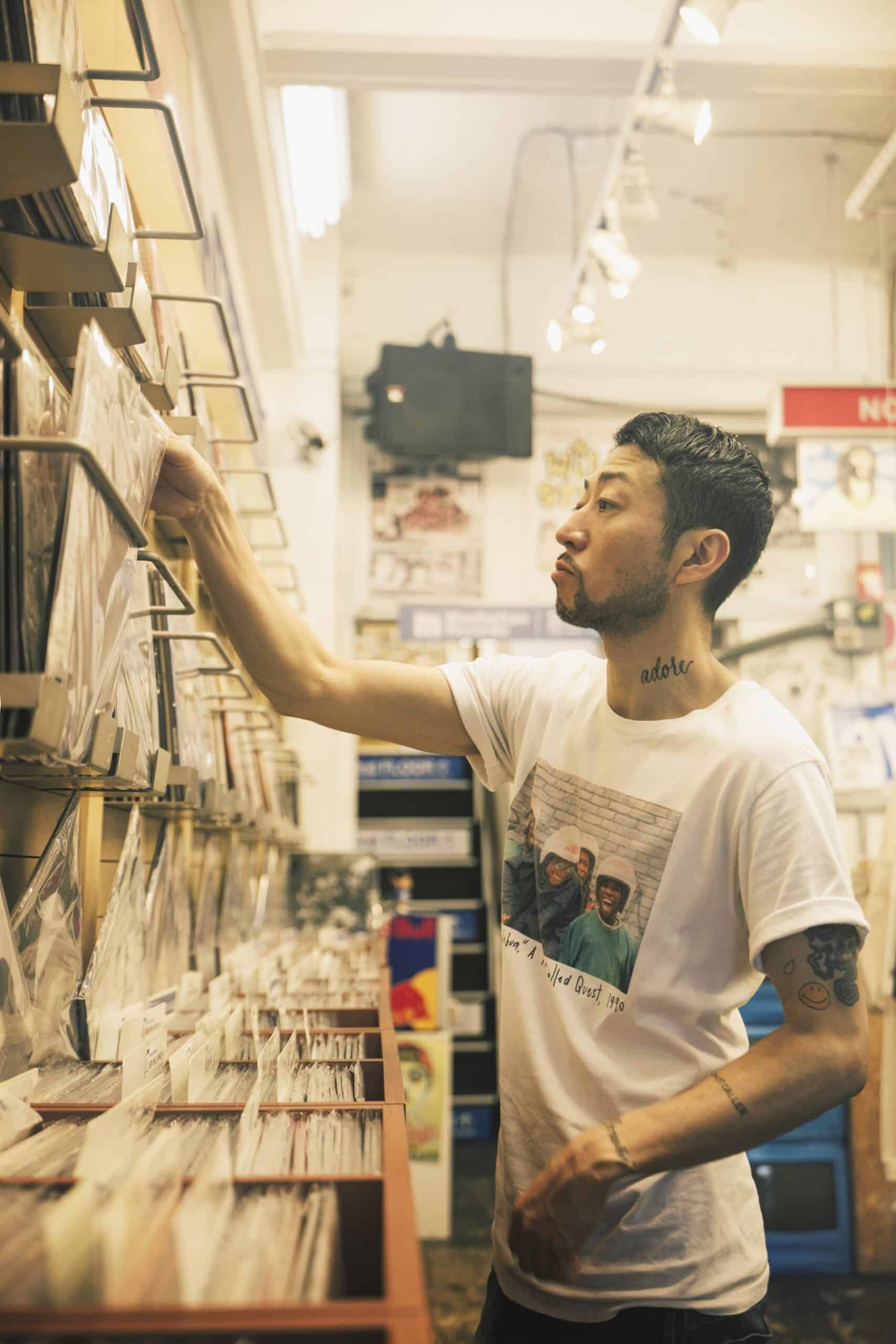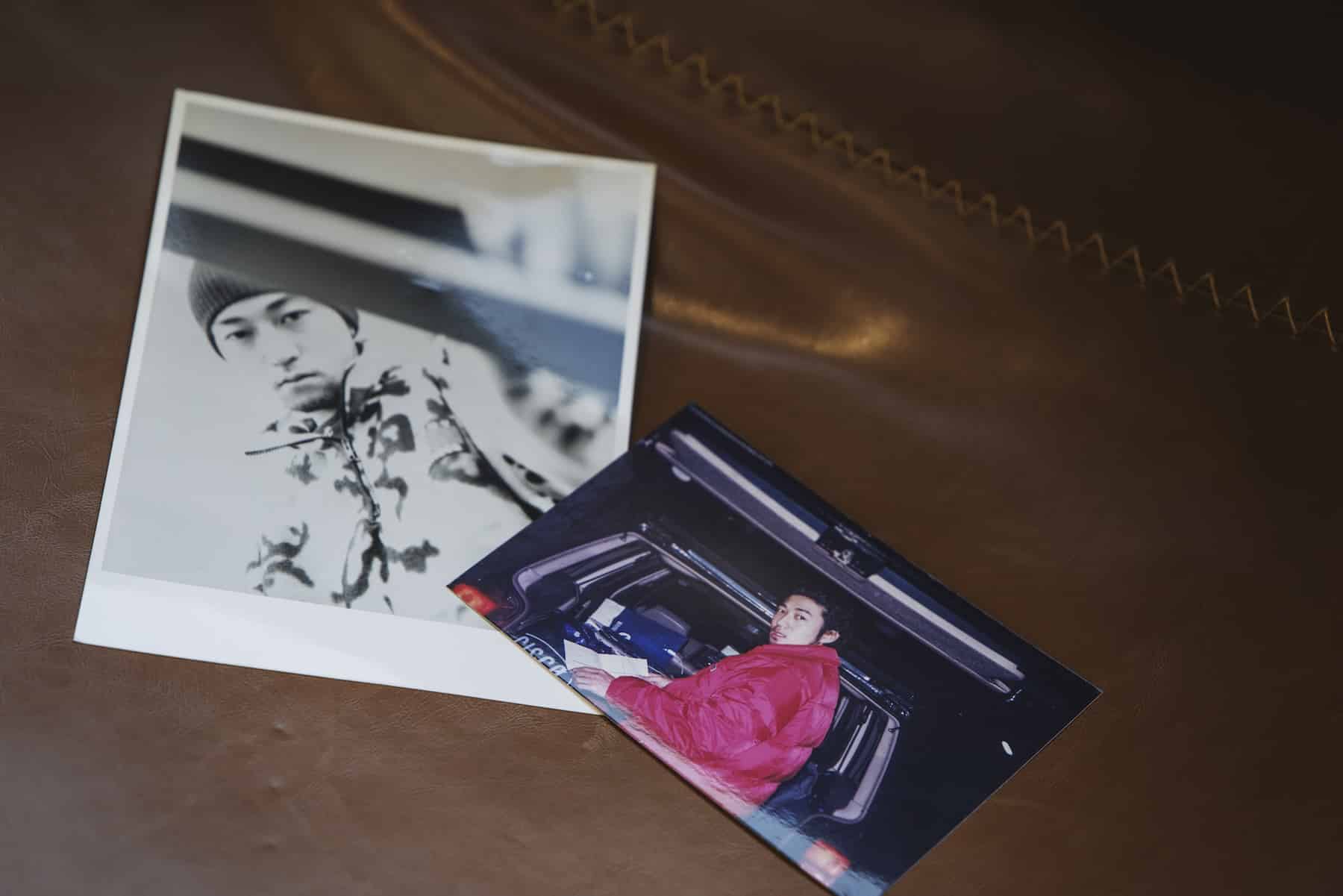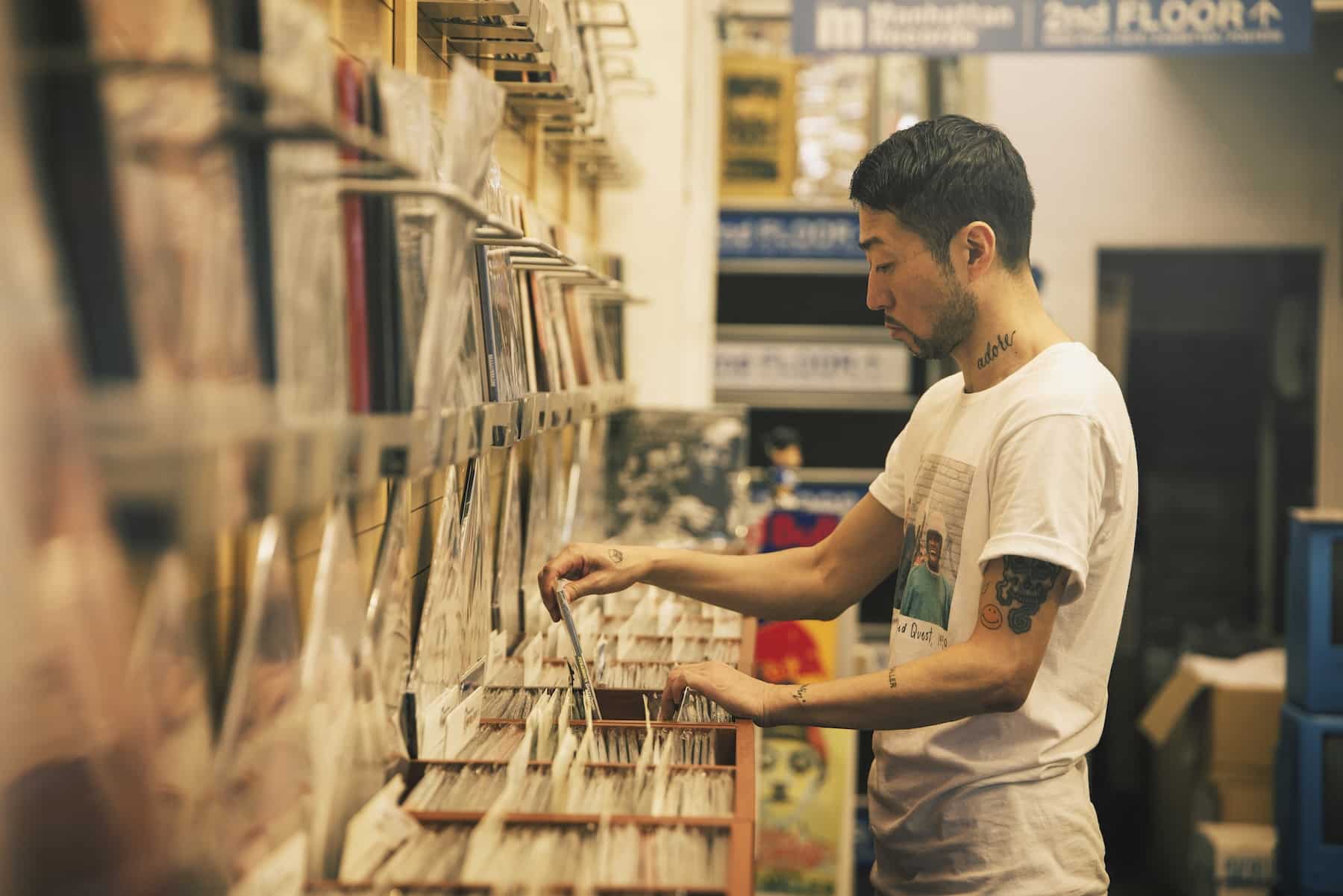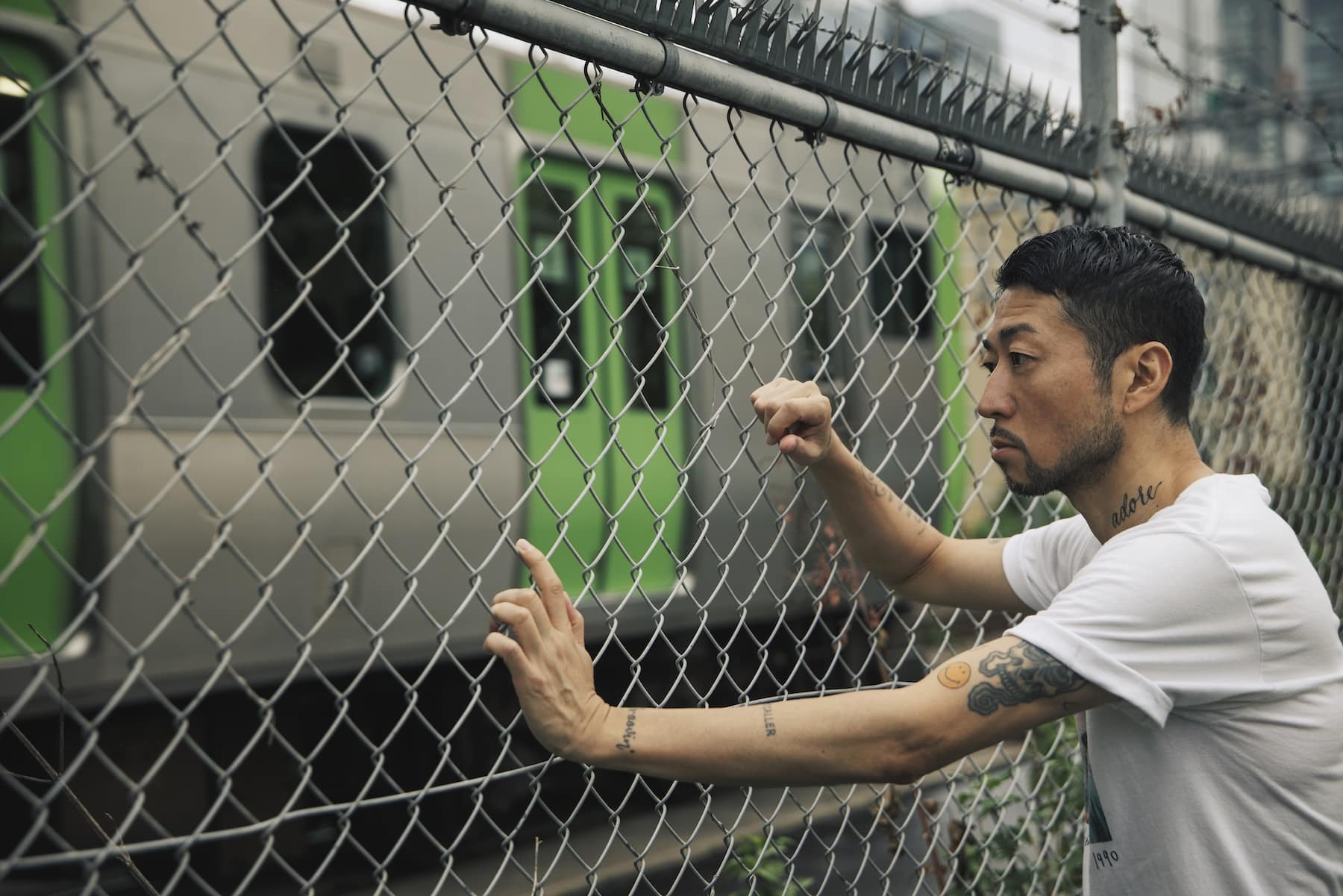CATEGORY
AREA
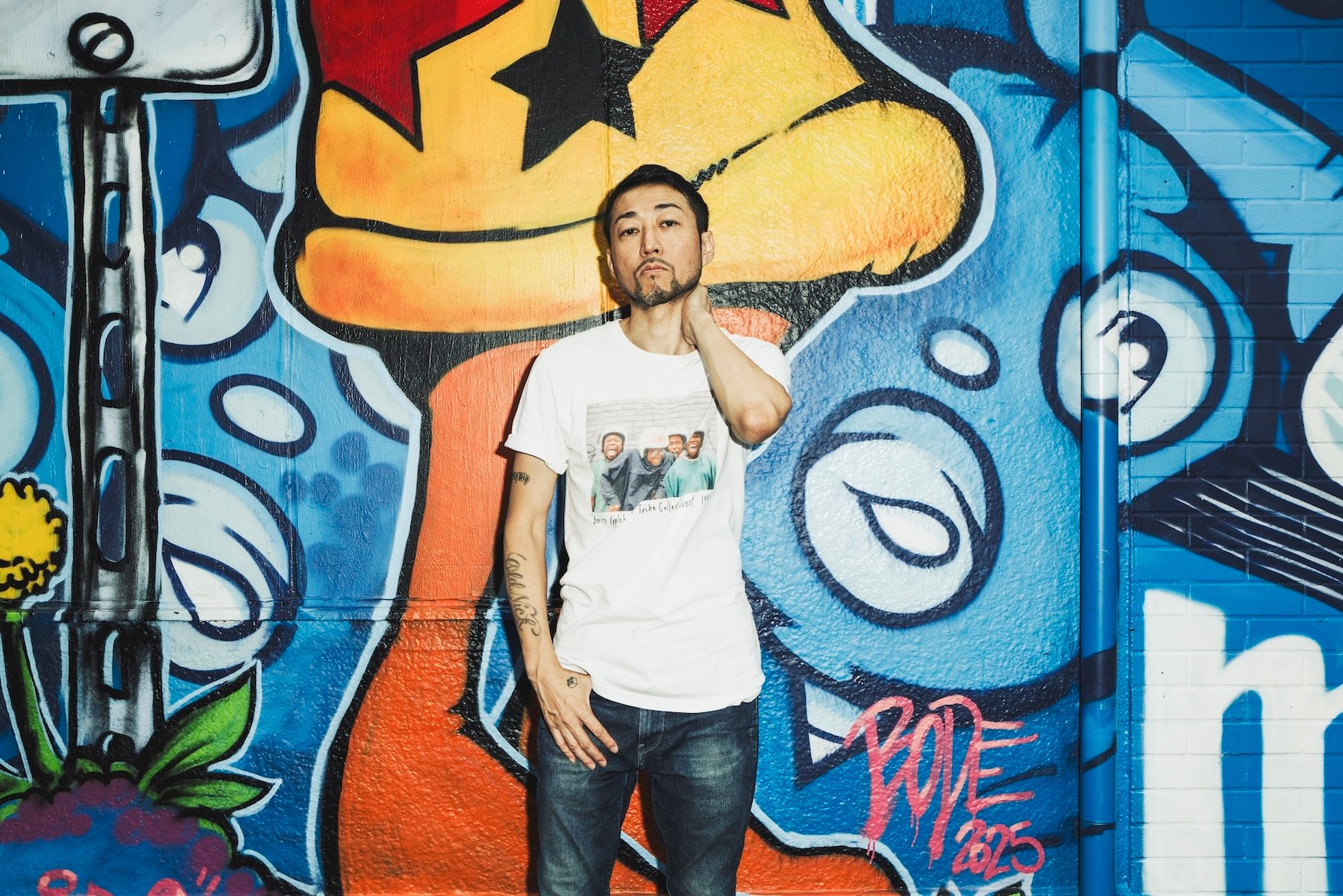
2025.11.20
Back in the 1990s, before Shibuya became a must-see destination for international tourists, Tokyo's youth were carving out their own identity through various cultural movements. This is the story of DJ HASEBE, an essential figure in Japanese hip-hop history, whose journey unveils the vibrant world of 1990s Shibuya.
Japan's youth culture took shape in the postwar era, fueled by an intense fascination with America and Europe. Through magazines and imported records, young people absorbed knowledge, experimenting and creating their own output. This foundation laid by earlier generations blossomed into diverse subcultures throughout the 1990s. At the heart of this movement were the second-generation baby boomers, born in the early 1970s. The generation, who are the children of the original baby boomers, grew up playing Nintendo's Famicom and watching Western music videos. DJ HASEBE was one of them.
While hip-hop DJs typically create a hard-edged gangsta atmosphere by stringing together rap tracks, HASEBE carved out his own lane. He became known for crafting mellow, sensual spaces by blending hip-hop with R&B and crossing genre boundaries. His style earned him the nickname "Ero DJ" (the sensual DJ). As a producer and trackmaker, he helped birth the Japanese R&B genre and attracted a strong female following—walking a unique path within the hip-hop scene while rising to become a household name.
HASEBE grew up in Kisarazu, Chiba Prefecture, about a two-hour train ride from Shibuya. His first visit to the Shibuya district came in 1989 when he was a high school student and a dancer.
"When I was 18, this late-night dance TV show called 'DADA L.M.D.' started. They had dance contests, and you could participate just by lining up at the disco where they filmed. I'd go to Shibuya record shops on those trips. It was the New Jack Swing era, and I'd buy Guy, Bobby Brown, Keith Sweat—stuff I wanted for dancing."
Until the mid-1980s, Tokyo was in its disco heyday, characterized by men in suits and women in body-conscious fashion typical of the era. Roppongi and Shibaura were the nightlife epicenters back then. As the '90s approached, culture began fragmenting. Fashion took on a stronger street edge, and Shibuya began to sprout small import record shops and intimate clubs specializing in different music genres.
After high school, HASEBE got a job, but the bursting of Japan's economic bubble left him unemployed. At that turning point, he took out a loan to buy DJ equipment and decided to pursue DJing professionally.
"The hip-hop scene was just entering its New School phase. I loved Native Tongues—De La Soul, A Tribe Called Quest, Jungle Brothers, Monie Love. I'd mix that with New Jack Swing in my sets."
His breakthrough as a DJ came in 1992.
"I made a mixtape to promote myself and gave it to BOBBY, a senior dancer who had real influence. He spread it around. That's how I gained recognition in the dance community.
Back then, his main record spot in Shibuya was “CISCO (RECORDS).”
"Even though I wasn't a big-name DJ yet, ‘CISCO’ assigned me a staff member. Whenever I came in, they'd come out and fill me in on new releases. I also shopped at ‘DMR.’"
First artist photo shoot (left) and loading up his car with records (right).
In 1993, DJ HASEBE finally decided to move to Tokyo.
"From then on, it was all Shibuya. Sure, there was this scary image (because of those delinquent street groups called "teams"), but my area felt more like the record shop district—the club culture neighborhood."
Back then, the gathering spot for Shibuya's hip-hop heads was a now-defunct club called “CAVE”. If you went there, you'd find everyone.
"I got introduced to ZEEBRA, who was leading Japanese hip-hop. RHYMESTER was there, BUDDHA BRAND had just returned from New York. Everyone inspired me—I felt like I had to step up or get left behind. There was this feeling that the scene was about to level up from there."
In 1994, rap tracks like "DA.YO.NE" and "Konya wa Boogie Back (Boogie Back)" became the first nationwide hip-hop hits, taking the music scene by storm. In the underground, LAMP EYE's "Shogen" dropped in 1995. Hip-hop's magma was building toward eruption.
The turning point came in 1996 at “Sanpin CAMP”—a live event that brought together Japan's then-underground hip-hop artists. It's now considered legendary.
"I could feel the scene expanding. My mixtapes suddenly started selling like crazy in 1996. The first 300 copies sold out instantly at ‘CISCO’, then we started producing thousands at a time. That raised my profile; my DJ fees went up, and I started making tracks and releasing records—suddenly, I could actually make a living. I paid off three months of backed-up rent and bought a car (laughs)."
Around the same time, a DJ HASEBE instructional video was released, reflecting the explosive growth in young people aspiring to be DJs. Walking through Shibuya, you'd see young people carrying shopping bags emblazoned with record shop logos. Fashion magazine interior features would showcase DJ setups as the epitome of cool living. It had become part of the trend.
In 1997, a major hip-hop-dedicated club opened in Shibuya—”HARLEM,” which continues to this day. From opening night, DJ HASEBE and DJ WATARAI launched their Tuesday regular party, Honey Dip.
"There was this sense that the scene was transforming. The fashion industry was exploding too, so many friends and people—’HECTIC,’ ‘Supreme,’ and their crews—would come by from the Uraharajuku scene."
Around the same time, he formed the R&B-based music unit Sugar Soul, releasing "Those Days" in early 1997. This cemented HASEBE's mellow, R&B-infused image beyond just hip-hop. Also, successfully appealing to a female audience was one of the achievements of "Honey Dip".
"Riding that wave, I thought we should have Japanese R&B singers perform live. Sugar Soul, of course, but also MISIA and bird, for whom DJ WATARAI was doing remixes. On live nights, we'd pack in over 1,000 people—on "Tuesday!"
What was the killer tune of that era?
" ’You Are the Universe’ by The Brand New Heavies. The album with that track came into ‘CISCO’—just one copy. My guy at the shop said, 'This seems like your vibe, so I held it for you.' I spun it that same night, and it went off. I put that record on the map in Japan (laughs)."
Shibuya at the time wasn't just hip-hop and R&B—specialized record shops for house, techno, dub, and abstract music kept opening. In sync with this, fashion and lifestyle culture exploded, making Shibuya a cultural melting pot that absorbed masses of young people.
"Shibuya record shops had promo-only records on the shelves. The instrumentals were the draw, and since quantities were limited, it was like a race to see who could grab them."
Japan's hip-hop scene, with Shibuya as its epicenter, continued spreading nationwide. However, from the mid-2000s, it gradually entered a winter season. The DJ world shifted from analog to digital, and Shibuya's record shops closed one after another.
"It feels like the future we envisioned, or rather the goals and dreams the scene itself was striving for, was achieved in the late '90s. But we couldn't envision anything beyond that. You can't reach places you can't see. Just copying American business models didn't work. Looking back, I coasted through the 2000s on '90s momentum. It took me ten years to rebuild, which brings me to today."
"I want to show how I can create a groove by selecting music that influenced me in the 1970s and 1980s and mixing it with my DJ sensibility.
Back in the day, I had this self-imposed rule—I'm a hip-hop/Black music DJ, so I can't play this track. But I'm over that now. If there's demand, if I can express myself, why not play it? Of course, it's not just anything—like I said, what matters is creating a groove when I play it."
Today, DJ HASEBE doesn't play at venues with smoking areas. His lifestyle has changed—in bed by midnight, up at 7 AM. His DJ gigs center on music festivals, corporate events, and day events that end before the last train.
Meanwhile, since the 2020 pandemic, he's been streaming the YouTube Live show "Welcome to my room (WTMR)" every weekend at 8 PM. It's gained popularity not just in Japan but with international viewers. His event "Snack Hasebe," centered on Showa-era Japanese pop, also sells out instantly.
Welcome to my room (WTMR)," a YouTube live streaming every Saturday at 8pm. The archived version, which cuts out the speaking parts, is also popular.
Finally, I asked what 1990s Shibuya taught him.
"Back then, I absorbed everything from Shibuya. It was my playground and my workplace. So it's the place that built my foundation.
The redevelopment has changed the landscape, but it hasn't changed as a launchpad for youth culture. That's why international tourists enjoy it, and I believe something new is being born there every day."

DJ / Sound Producer
In 1990, he began his career as a DJ, and in 1996 formed the music unit Sugar Soul (which later became a solo unit with vocals). In 2000, he released his full-length album "Hey World," which was released in Europe the following year and became a hot topic of conversation. In 2020, he released an album celebrating his 30th anniversary as a DJ. Currently, he is gaining new fans by offering a wide range of ways to enjoy music, such as live streaming on his YouTube channel and the Showa-era song event "Snack Sebe.
X: @djhasebe
Instagram:oldnick
YouTube:Welcome to my room
